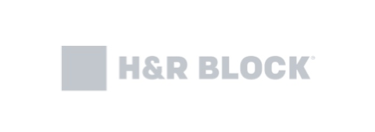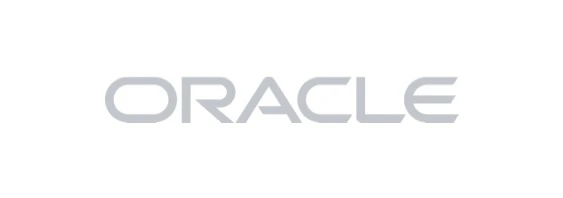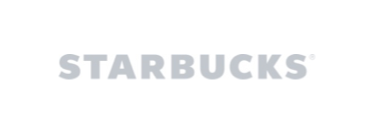YouTube vs ScreenPal
Which is the best tool for sharing videos and more?
Check out ScreenPal – the premier alternative to YouTube for secure video sharing. With ScreenPal, you’ll have an end-to-end and cost-effective way to create, edit and share engaging videos and screenshots for your work, school, or personal projects. It’s the ultimate screen capture tool that will help you create smarter and faster, and share brand-ready content securely. Perfect for anyone focused on brand building and viewer engagement without the distractions and limitations of ads and competing content. Try ScreenPal today and elevate your communication and your brand!
The integration of video content has revolutionized communication within both the corporate and educational sectors, offering a dynamic and flexible method for engaging audiences. In the realm of business, video facilitates a wide array of functions including knowledge dissemination, onboarding new staff, and driving marketing initiatives. Similarly, educational institutions leverage video to enhance learning experiences, fostering a more interactive and personalized approach to instruction.
Using video, teams can efficiently exchange feedback, provide updates, share valuable insights, and coordinate workflows, thereby streamlining collaboration. The core strength of video communication lies in its ability to captivate attention, foster deeper connections, and deliver a more customized experience across both professional environments and educational settings.
ScreenPal and YouTube are two popular video sharing platforms. They both offer easy ways to share videos. These platforms enable users to effortlessly share their videos, broadening the reach of their content and facilitating higher levels of engagement with their intended audiences.
ScreenPal also features easy yet advanced video editing, as well as customized sharing and engagement within videos by adding polling, ratings, and quiz questions.
ScreenPal’s video editing tools also allow people to create video projects, such as product demos, company training videos, professional development, and marketing videos. These videos can help companies and solopreneurs build their brands and connect better with their audience.
YouTube’s editor does offer some basic editing like trim & cut, blur and audio. However, for your audience to experience the videos, they are served ads before your videos will play. YouTube does offer paid plans for consumers of the content, if they want to skip ads. Additionally, other creator’s content will be displayed on the beside of your video, competing for the attention and focus of your viewers. All of the video view pages are also branded with the YouTube experience.
ScreenPal offers more for less: ScreenPal stands out in the realm of video editing with its comprehensive suite, featuring overlay capabilities, music options, and robust audio editing tools. Users can effortlessly adjust their webcam size, infuse creativity with virtual backgrounds, or layer video overlays using ScreenPal’s user-friendly editor. Central to ScreenPal’s efficacy is its non-destructive editing. This ensures that any mistakes can be seamlessly corrected, thereby maximizing content reusability and significantly saving time in the editing process.
ScreenPal’s Distraction-Free Hosting Platform: Videos shared on ScreenPal are not interrupted by ads, and viewers do not need an account or a subscription to skip ads. ScreenPal also does not share competing content from other creators. YouTube primarily relies on comments and likes for viewer engagement, lacking the integrated polling, rating, and quiz options that ScreenPal offers.
YouTube’s Ads and Branding: YouTube serves ads before and during videos, potentially detracting from the viewer’s experience, unless they opt for a paid plan to skip ads. YouTube pages are also branded, and other creators’ content may detract from your videos. ScreenPal, on the other hand, offers an ad-free viewing experience.
ScreenPal’s Enhanced Screenshot Tools: ScreenPal offers an enriched screenshot experience, complete with annotation tools such as step sequences and blurring effects. This makes it an invaluable resource for teams aiming to convey complex information while protect sensitive data.
Cost-effectiveness: For $8 per license each month, teams gain access to the entire array of ScreenPal features. This includes not only advanced editing tools but also content hosting, sharing capabilities, and the option for brand customization, ensuring a cohesive and professional presentation. Importantly, access for viewers is free of charge, removing barriers to content consumption and engagement.
Which is the best choice for busy professionals?
While YouTube is a popular choice for video hosting, its broad marketplace approach to content consumption often complicates the process of capturing and retaining viewer attention. For example, students seeking educational materials might find themselves distracted by videos on gaming and trending topics, diluting the impact of the educational content. Similarly, personal videos and brands must vie for visibility in this highly competitive space. YouTube is also owned by Google, and uses its algorithm to serve content that may be distracting, or not be helpful to your brand.
ScreenPal, in contrast, offers a more focused environment for sharing your content. By exclusively featuring your videos, ScreenPal helps ensure that your audience’s attention remains squarely on your message. Moreover, ScreenPal empowers you to customize your watch pages with your branding or to seamlessly embed videos on your own website. This is achieved without the intrusion of additional ads or interruptions, providing a cleaner, more engaging viewer experience.
Read on to see how ScreenPal and YouTube compare.
ScreenPal vs YouTube: At a glance
See the full ScreenPal vs YouTube comparison
ScreenPal: trusted, loved.
Overall rating 4.6 out of 5 based on 4,516 reviews
ScreenPal fan-favorite features

Screen recorder
The original screen and webcam recorder for desktop, mobile, and browser recording.

Screenshot
Capture any part of your screen, edit and annotate for context, then share anywhere.

Video editor

Image editor
Customize images and screenshots with our easy-to-use, free image editor.

Video hosting
Manage, protect, and share videos and images with content management.

Video quizzing
Create interactive quizzes in minutes. Turn any video into an interactive experience.
ScreenPal vs YouTube: Screen capture
How do ScreenPal and YouTube compare in screen capture features?
ScreenPal offers a powerful screen recording solution that is versatile across various devices, including Windows/Mac, through a Chrome Extension, and on mobile apps, ensuring broad accessibility and convenience. While YouTube does provide an opportunity to record videos via its “Go Live” feature, which is particularly useful for real-time broadcasts such as press conferences or breaking news, it lacks a dedicated feature for screen recording.
In contrast, ScreenPal excels with an extensive suite of screen capture capabilities, enabling users to effortlessly capture both videos and screenshots. This positions ScreenPal as a more specialized tool in the domain of screen recording, whereas YouTube’s primary focus remains on video sharing and live streaming, without dedicated screen capture utilities.
ScreenPal enables you to effortlessly capture videos of up to 15 minutes for free, without the need to log in or create an account, and allows for the recording of an unlimited number of videos. It offers flexibility in recording, allowing you to capture your entire screen or select a custom area. Additionally, ScreenPal provides the convenience of pausing and restarting recordings, with the option to adjust the recording frame by resizing or moving it while paused.
For more personalized content, you can opt for webcam-only recordings or create picture-in-picture (PIP) videos. ScreenPal enhances your on-camera appearance with features that allow you to blur or replace your webcam background with stock images such as office settings or nature scenes. Moreover, you have the capability to change your background or adjust the blur effect post-recording using the video editor, where you can also modify your webcam’s size or conceal it during specific video segments.
ScreenPal enriches the recording experience with an array of drawing tools, including a pencil, highlighter, eraser, shapes, and text options. These tools are incredibly useful for annotating your screen on the fly, and any mistakes or unnecessary annotations can be easily removed or hidden using the video editor. The platform also supports focus-enhancing zoom functions during recordings.
For those planning more structured videos, such as training modules or application demos, ScreenPal’s built-in storyboard tool facilitates pre-planning and collaboration, ensuring a more efficient video creation process.
In terms of video quality, ScreenPal stands out by offering high-definition recordings. Its exceptional suite of free annotation tools surpasses the basics, providing advanced editing capabilities and superior annotation features. These enhancements are designed to improve the clarity and precision of visual communication and significantly elevate overall brand messaging.
Did you know? ScreenPal’s screenshot tool is a free feature! Advanced image capture and editing is included in all of our paid plans.
Can I capture and edit screenshots with ScreenPal and YouTube?
Depending on the context and audience, imagery, such as screenshots, can serve as a more effective communication tool over videos. Professionals, in particular, can leverage annotated screenshots to enhance their communication strategy. Such screenshots are invaluable for conveying ideas, instructions, and feedback comprehensively. Annotations like arrows, circles, text, and highlights allow for precise emphasis on key points, facilitating a clearer understanding among team members, clients, or stakeholders. This approach not only streamlines information sharing but also fosters stronger collaboration and reduces the risk of misinterpretation.
Currently, YouTube doesn’t support the capture or sharing of screenshots directly on its platform.
ScreenPal, however, offers versatile screenshot capabilities. With ScreenPal, you can select specific screen areas or easily capture a window, the entire screen, or a scrolling screenshot. ScreenPal also introduces the convenience of delayed captures, activated by pressing a number key, perfect for snagging ephemeral content such as right-click menus and modal dialogs. Captured images are automatically saved to the clipboard for effortless distribution, and saved locally on your device for future use.
Integrated within its comprehensive toolset, ScreenPal enables you to capture any part of your screen, enriching these images with annotations like shapes, text, sequential steps, highlights, and blurs for enhanced clarity. These annotated screenshots can be effortlessly inserted into documents or uploaded to ScreenPal for secure sharing through a link. They also integrate smoothly as overlays in video editing or as components within a storyboard.
Moreover, ScreenPal’s image editor stands out with its advanced AI-powered image-to-text technology, enabling users to edit, style, or remove text directly within screenshots. This powerful feature ensures each screenshot can be meticulously tailored, delivering targeted information to your audience without distractions.
ScreenPal vs YouTube: Video editing
How does video editing compare for ScreenPal and YouTube?
When evaluating video editing capabilities, it’s essential to distinguish between tools like ScreenPal and platforms such as YouTube. ScreenPal is equipped with a robust, built-in video editor that is both user-friendly and feature-rich. It provides a suite of tools and effects that enhance the ability to customize videos, offering a more specialized editing experience. Conversely, YouTube, with a primary focus on video-sharing, offers only basic video editing features, primarily designed for simple modifications.
ScreenPal’s integrated video editor is comprehensive, allowing users to trim and cut footage, merge clips, add new recordings seamlessly on the timeline, and incorporate transitions. Users can also opt to hide their webcam and mouse cursor during specific parts of the video, overlay text, and include background music or voice-overs. These options help in crafting polished, professional-looking videos.
Moreover, ScreenPal supports a flexible editing process where content can be efficiently reused. Any drawings or annotations made during recordings can be removed or edited afterward, thanks to the non-destructive nature of the editing process. This means editors can revisit any stage of their video editing without losing previous work, facilitating continuous improvement and iteration. Plus, projects are always accessible for repurposing into new versions or integrating with other projects, significantly streamlining the video production workflow.
In contrast, YouTube’s editing functionalities are relatively limited. While it does provide options to trim or cut videos, add blurs, and overlay music, it lacks a comprehensive set of editing tools.
Therefore, for individuals or professionals where video editing is a critical component of their workflow, ScreenPal stands out as the more advantageous option. It not only offers extensive editing capabilities but also empowers users to tailor their content meticulously and efficiently.
Did you know? ScreenPal also offers mobile video editing apps, enabling you to record and edit content directly from your iPhone or Android device.
Can you add and edit multiple audio tracks in ScreenPal and YouTube?
Both YouTube’s “Go Live” feature and ScreenPal enable users to record with both microphone and system audio, offering the flexibility to choose between internal or external microphones for capturing sound.
In video production, the ability to add and manipulate additional audio tracks is essential. ScreenPal and YouTube cater to this need by allowing the addition of multiple audio tracks to enrich your videos.
ScreenPal, in particular, excels in audio management by providing versatile options for adding, editing, and managing multiple audio tracks. One of the platform’s strengths is its ability to facilitate the reuse of projects, significantly speeding up the video creation process. Users can effortlessly replace audio tracks or re-record narration after the initial recording, eliminating concerns over mistakes and opening opportunities for repurposing content.
Professionals often encounter challenges related to maintaining optimal voice volume, especially in noisy environments or when high-quality microphones are not available. ScreenPal confronts these issues head-on by enabling individual volume adjustments for each audio track. This feature is especially beneficial when integrating background music, as ScreenPal automatically dims other audio tracks to ensure your narration remains clear, ensuring a harmonious and balanced sound mix.
ScreenPal further streamlines the video editing process with features like automatic silence detection. This tool identifies pauses in narration, offering options to either speed up these moments or remove them entirely, thereby eliminating the need for manual edits to tighten the pacing of your videos.
While YouTube provides access to a built-in music library for enhancing videos, it restricts users from importing their own music and lacks sound effects in its collection. In contrast, not only does ScreenPal feature a comprehensive library of music and sound effects, but it also supports importing external music tracks, offering greater creative flexibility and customization for your projects.
How do ScreenPal and YouTube support accessibility?
With ScreenPal, you can upload a captions file, use the interactive captions editor to add captions at specific points in a video, automatically generate editable captions using AI speech-to-text, or turn their script into captions in the storyboard creator. ScreenPal has offered flexible captioning for years, while continuing to add improvements and additional robust captioning options.
ScreenPal also provides a 508-compliant, fully accessible video player that supports keyboard navigation, accessible color contrast, and closed captioning in multiple languages. All of ScreenPal’s products are designed to be accessed using keyboard navigation and assistive technologies, such as screen readers.
ScreenPal’s commitment to accessibility is demonstrated by its Voluntary Product Accessibility Template (VPAT) report, conformance to WCAG 2.1 Level A/AA (ISO/IEC 40500), and US Section 508 compliance. ScreenPal conducts regular testing internally and via third parties to ensure that all products are accessible.
ScreenPal vs YouTube: Video sharing
How do YouTube and ScreenPal differ in video management and sharing?
YouTube and ScreenPal provide differentiated video management and sharing options tailored to suit distinct audiences and needs.
YouTube is a global platform recognized for its substantial reach and engagement capabilities. It enables creators to upload and manage videos through an extensive library system, enhancing discoverability and engagement with advanced metadata options. Videos can be public, unlisted, or private, providing versatile sharing possibilities. Additionally, YouTube integrates powerful analytics that offer insights into demographics, engagement levels, and other vital metrics, invaluable for creators looking to expand their reach. This platform adopts a ‘marketplace’ model, where viewers often encounter ads before and during videos, and are provided with recommendations based on their browsing history, enhancing the communal viewing experience but potentially detracting from the individual content focus.
ScreenPal, in contrast, offers more controlled video management features perfect for professional or educational settings. It allows users to download videos in various formats, share securely via links, or embed them seamlessly using customizable codes. Users can also publish videos directly to other platforms such as YouTube, Google Drive, Dropbox, and Vimeo. You can share on ScreenPal.com without the interruption of pre roll advertisements, ensuring that the content remains the central focus for viewers. ScreenPal emphasizes secure, cloud-based management of content, enabling users to organize, store, and share videos and imagery efficiently, and distraction-free.
Both platforms support the creation of playlists or channels for curated content, a common feature that enhances content organization and audience engagement. However, ScreenPal provides additional functionalities tailored for businesses and educational institutions by offering options to integrate video content seamlessly into websites, blogs, or even Learning Management Systems (LMS), ensuring a distraction-free environment and control over content interaction.
Moreover, while both platforms allow commenting on videos, ScreenPal does not push external content recommendations, maintaining the purity of the content being viewed and enhancing the content’s security and exclusivity. This approach is particularly advantageous for creating a branded, consistent environment for businesses or educational providers.
In summary, YouTube is ideal for established lifestyle influencers and big brands seeking broad exposure and community interaction backed by extensive analytics. In contrast, ScreenPal is better suited for those prioritizing direct control over content distribution, privacy, and integration into personal, business, or educational platforms. Each platform serves distinct purposes, catering to diverse creator and audience needs within the digital video space.
How do YouTube and ScreenPal differ in integrations?
ScreenPal also offers integrations with video meetings recording apps like Zoom, Microsoft Teams and Webex so you can easily download and edit recorded meetings and classes.
Many apps, including ScreenPal, integrate with YouTube for video sharing for those who are interested. For Zoom, for instance, you can integrate to live stream meetings.
Only ScreenPal offers a robust, industry-standard LTI 1.3 app that is easy to integrate with standards-compliant learning management systems, including Canvas, Schoology, Blackboard, D2L Brightspace, and Moodle.
With ScreenPal’s LMS integration, educators can sync video quizzes with their gradebooks and embed videos, images, quizzes, and content channels in their classes and assignments.
ScreenPal vs YouTube: Assessment & analytics
Do YouTube and ScreenPal offer video assessments or feedback with ratings?
Incorporating interactive elements such as polls, ratings, or questions within videos significantly boosts viewer engagement. These interactive features not only captivate attention but also stimulate active participation, offering professionals a dynamic tool to measure audience interest and comprehension. By leveraging feedback from these elements, creators can deeply understand audience preferences, pinpoint areas needing enhancement, and fine-tune their content strategies for better resonance. This approach not only enriches the viewing experience but also empowers creators to develop content that is both engaging and tailored, fostering increased audience interaction and valuable feedback.
Moreover, the insights gathered from these interactive components are instrumental in shaping content strategies and making informed decisions. This data-driven approach ensures that content aligns more accurately with the audience’s interests and needs, enhancing content relevancy and viewer satisfaction. Interactive video features transform the viewer experience from passive to active, enabling creators to forge impactful connections with their audience while driving stronger engagement and collecting insights for ongoing content optimization.
ScreenPal stands out by offering streamlined integration of polls, ratings, and questions into your videos, turning them into immersive and interactive experiences effortlessly. Regardless of whether you’re uploading content directly from your device or through compatible apps, ScreenPal provides the versatility to animate your content creatively.
The platform supports a plethora of question types, including multiple-choice, true/false, short answer, polls, and ratings, allowing for customization that meets your unique objectives. These questions can be seamlessly integrated, ensuring a cohesive viewer experience. Features such as response randomization add an element of surprise, maintaining viewer interest.
ScreenPal puts you in complete command of your content’s interactivity. You have the liberty to designate correct answers for knowledge checks or gather invaluable viewer insights through feedback. This robust feedback mechanism helps in evaluating content effectiveness, guiding creators toward insightful enhancements for future endeavors.
Did you know? With Screenpal, you can generate and download a QR code for your quiz directly within the platform. This feature simplifies the integration of your interactive quiz into both digital presentations and printed materials, allowing for seamless and engaging audience participation.
ScreenPal vs YouTube: Security & privacy
How do ScreenPal and YouTube compare on security and privacy?
ScreenPal understands the critical significance of security and privacy for companies across various industries. To support our customers in higher education and businesses operating in tightly regulated sectors, ScreenPal has undergone stringent security audits to ensure the utmost protection of sensitive data and information.
With a global user base, ScreenPal adheres to the highest standards of security and compliance with international privacy frameworks such as GDPR, PIPEDA, and the EU-US Data Privacy Framework. By aligning with these regulatory requirements, we provide our users with peace of mind and assurance that their data is handled with the utmost care and in full compliance with established privacy laws.ScreenPal is also COPPA, FERPA, and CSPC compliant, and has been vetted and approved by leading LMS providers. ScreenPal is the embedded solution for such providers as Instructure (Canvas Studio) and Docebo for screen recording and video editing.
Privacy concerns on YouTube primarily revolve around the exposure of an individual’s video-watching habits, likes, dislikes, and potentially more personal information being open for the world to see. This has raised significant concerns among users about how their data is being used and shared on the platform. Another layer of privacy concern comes from Google’s requirements for all monetizing YouTube creators, which might involve sharing more information than some users are comfortable with. This includes compliance with specific security measures and policies that could potentially impact privacy. Additionally, strategies to maintain one’s privacy on YouTube, such as using browser extensions to limit interactions or setting reminders to take breaks, highlight the ongoing concerns users have regarding how their engagement and data are managed by YouTube and third parties.
There’s a continuous effort by YouTube to enhance user privacy, offering controls like “Your data in YouTube” which aims to provide users with more transparency and control over their data. Despite these efforts, the balance between personalized content and privacy remains a key concern among users.








































